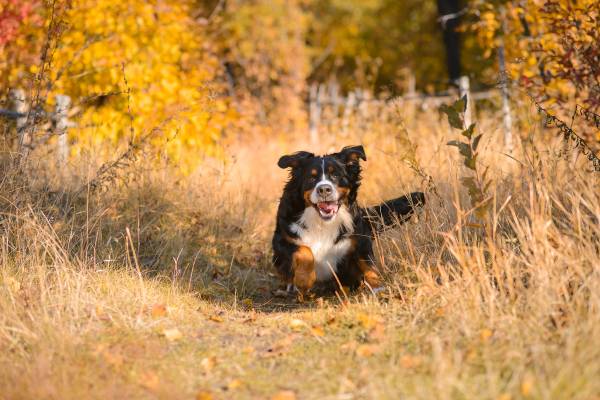Connect with a verified veterinarian in minutes. Licensed vets are available 24/7 to answer your questions. No need to worry about your furry family member.
Dogs can do some very strange things from time to time! Many canine behaviors are entirely normal, but when you see something for the first time, you’ll wonder what’s going on! This is the case when female dogs scoot across the floor on their rear ends!
Does your female dog scoot? Are you worried that she may have a medical condition that’s causing her to scoot? If so, you’ve come to the right place. We understand that this can be a concerning behavior.
We’ve put together some information about why female dogs scoot and what you can do to help your dog. Let’s get started!
What is Scooting?
Some dogs may scoot their rear ends with their hind legs slightly up in the air. The dog then drags herself across a surface with her front legs. She may go across carpets or other indoor surfaces. She may also scoot her rear ends across the grass, pine needles (yes, we had a dog that did this), and other surfaces.
Scooting is normal canine behavior; however, what causes a female dog to scoot?
Why Do Female Dogs Scoot on Their Rear Ends?
Here are some of the most common reasons a female dog may scoot:
1. Food Allergy
Food allergies are a common cause of female (or male) dogs scooting. These allergies can cause severe itching, burning, and other issues in dogs. It’s common for a dog with food allergies to have a burning, itching feeling under their tails.
2. Urinary Tract Infection
Another common problem in dogs that makes them scoot is a urinary tract infection (UTI). This is more common in female than male dogs. Female canines have a shorter urethra than male dogs.
A UTI can cause burning, itching, and pain under the dog’s tail, causing her to scoot. She scoots to get some relief from these UTI symptoms.
3. Poop Under Her Tail
Another problem that may cause a female dog to scoot is that she has poop caught under her tail. This problem is most often seen in dogs that have long hair near the rear, such as Chows, Golden Retrievers, and others.
The issue can be caused by fur that’s become too long. The long fur may entrap poop, causing poop to stick under the dog’s tail. Your dog may be trying to get rid of the problem by scooting on the grass, carpet, or other rough surfaces.

Review symptoms, medications & behavior to keep your pets healthy with a Vet Online in just minutes.
Ask a Vet Live NowHow to Help Your Dog
If your dog is scooting regularly, check under her tail. Look for signs of poop caught in her fur, redness, skin irritation, or other concerning symptoms. These are signs that your dog needs to see the vet.
The vet can make a diagnosis and prescribe medication to help your canine companion feel better! You and your dog will both be happier for it!
Connect with a verified veterinarian in minutes. Licensed vets are available 24/7 to answer your questions. No need to worry about your furry family member.

Julie
Julie is a graduate of the University of North Carolina, Wilmington, where she studied Animal science. Though contrary to the opinion of her parents she was meant to study pharmacy, but she was in love with animals especially cats. Julie currently works in an animal research institute (NGO) in California and loves spending quality time with her little cat. She has the passion for making research about animals, how they survive, their way of life among others and publishes it. Julie is also happily married with two kids.
Review symptoms, medications & behavior to keep your pets healthy with a Vet Online in just minutes.
Ask a Vet Live Now

